Streaks of spray paint spelling meaningless, sometimes dangerous, words: that’s how some people view graffiti. For those who partake in the craft, however, graffiti is not a nuisance, but art.
Cory Stowers, Executive Director of DC Murals, has been a graffiti writer for over 20 years. He considers graffiti an ‘external art gallery’ and part of a vibrant community.
“If I see graffiti in a neighborhood, I know there are artists and creative thinkers here. There are people here who think outside of the box and margins,” he said.
“If I go to a place that’s really sanitized, it feels very stiff. Some people might like it like that, and that’s cool too, but I want to see graffiti because it tells me that something is happening in this community.”
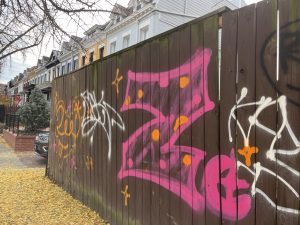
However, not everyone shares this opinion of the activity, as is evident in the number of graffiti removal requests submitted yearly to D.C.’s 311 City Service Request system.
The Wash reviewed all city service requests from 2019-2023 and studied patterns of highly requested services.
From 2019-2021, rodent control was the top request, while in 2022, bee and insect control was number one.
In 2023, a new request topped the list, especially in the zip codes that encompass Columbia Heights: graffiti removal.
The Department of Public Works considers graffiti a public nuisance, stating on its website that it “costs the District and its residents more than just money.”
311 request data shows graffiti removal has the largest number of “Open” statuses in Columbia Heights as well, meaning DPW has not started or completed those work orders yet.
One of the reasons for this may be that the individual requesting the removal must complete a detailed liability form before the department can remove the graffiti from private property.
“Graffiti tarnishes the appearance of our neighborhoods. Gang-related graffiti can threaten violence or identify turf boundaries,” the online statement from DPW reads.
Gang association with graffiti has been tied together for decades.
As a graffiti community member, Cory Stowers said this common misconception harms real artists trying to make their talents known.
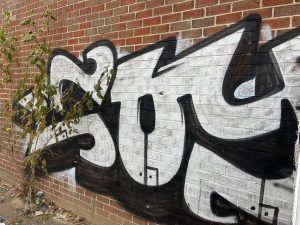
“I can read it, so I don’t get scared by it. Most people who don’t know what it is automatically assume it’s gang-related, but nine times out of 10, it’s not. Even on the chance that it is, it doesn’t inherently mean that it’s something dangerous.”
Victoria Kiechel, an architect and American University professor, believes graffiti is more than just words scribbled on a wall.
“Graffiti is both a sociopolitical statement and a form of expression of one’s personal identity. It’s a way for people to say: ‘This is me. This is my voice. I’m here, and I matter, said Kiechel.
Keichel, who has lived in the District for several decades, remembers a time when D.C. wasn’t known as a “graffiti city”.
“There was graffiti in D.C., but it wasn’t a huge form of cultural expression like it was in New York City or Philadelphia. In recent years, however, I’ve seen more of it, and maybe D.C. is getting on the map as a graffiti art city,” she told the Wash.
There are many reasons for this uptick, as Stowers explained, mainly the lack of legal, government-funded graffiti art programs available for young artists to practice their craft.
“The uptick of graffiti, I think, is directly attributable to the fact that there are no ongoing programs in the city that actually works to actively engage young graffiti artists,” said Stowers.
“There’s just nothing there that speaks to them from a cultural perspective that makes them want to stop writing their name on a block thirty times and instead devote their time to this one wall.”
The D.C. government has attempted to rein in illegal graffiti by implementing street art programs, like Murals DC, that commissions local artists to paint murals on public walls.
The program has resulted in colorful, eye-appealing street murals that many city residents and tourists alike appear to be fond of, but Stowers said the program still misses the mark in actually solving the problem.

“The program existed before DPW became a part of it, and sadly since they’ve taken control of it, there’s been literally no outreach to the actual graffiti community. They instead prefer to employ professional artists,” said Stowers.
“The idea was to bring in young artists and lift them up to one day be the lead artists, but I can tell you that not one of them were promoted to a lead artist commission, and they were paid very little money for their participation. Murals DC would also not allow their names to be on the wall, so they took away all the reasons why these artists would want to participate.”
DPW did not respond to The Wash’s inquiries by the provided deadline.
Stowers and Kiechel believe a viable solution for illegal graffiti could be to make designated public spaces available for artists to express themselves freely.
Stowers touted the idea of identifying blank walls around the city where artists can practice. At the same time, Kiechel referenced Charlotesville’s Free Speech Wall as a prominent example of another city experimenting with areas for artistic expression.
D.C. resident Martin Zelada, agrees that artists need an area to express themselves, which would benefit both graffiti writers and residents like himself who don’t find graffiti visually-attractive.
“I think while a lot of graffiti is about self-expression, it’s also about receiving attention for your work or your struggles,” he said.
“They should have a space where they can write or paint that gives them the attention and recognition they’re looking for, while keeping it off of public buildings.”
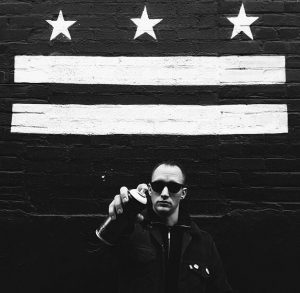
Cory Stowers still wants to challenge the way people perceive the graffiti they’re seeing in their communities.
“Think about someone’s name written on a trash can beside a painted wall mural,” Stowers posed. “A lot of people will say they really love that mural but hate the graffiti on the trash can. What I would say to them is this: without that graffiti on the trash can, you don’t get the mural.”
“That kid who wrote their name on the trash can is going through a process of building their skills and repertoire to be able to one day paint a mural like that.”


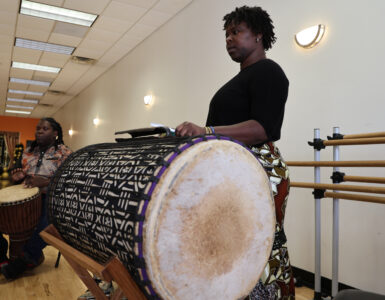
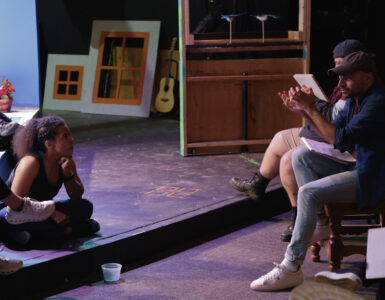











Add comment